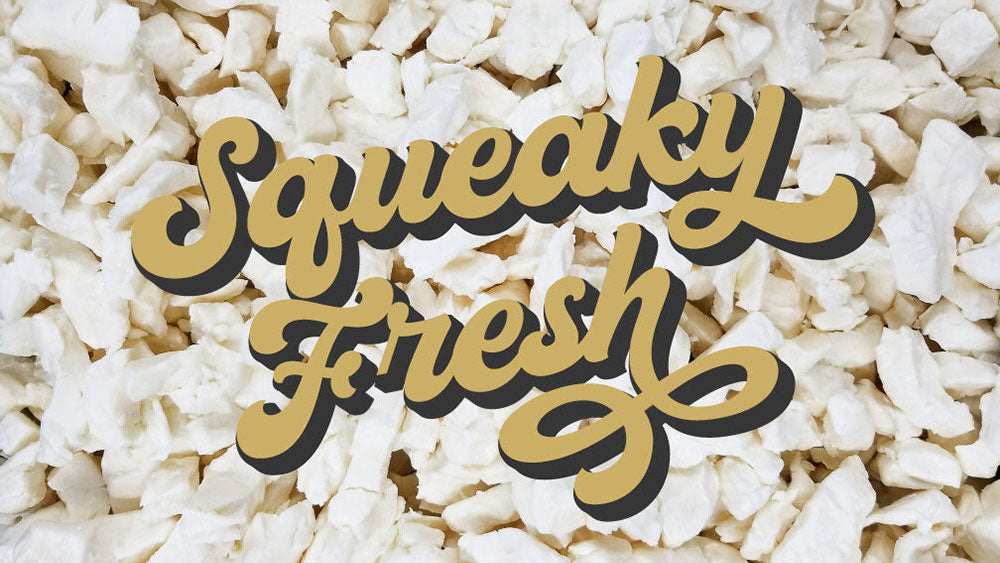
· By Jeremy Lipzinski
The Surprising History of Cheese Curds
Cheese curds have earned their place as a Wisconsin staple, but their story goes far beyond the Midwest. These squeaky, bite-sized delights have been enjoyed for centuries and continue to grow in popularity, showing up as bar snacks, salad toppings, and even drink garnishes. But what makes cheese curds so unique? From its origins to its signature squeak, let’s see the history of this beloved dairy delicacy.
The Early Years
Cheese has been around for over 7,000 years, giving humanity time to perfect it. Some historians trace the roots of cheese curds back to Ancient Rome, where the Romans enjoyed a fried curd-like treat called globuli—cheese curds dredged in semolina flour, fried in olive oil, and coated in honey. Sound familiar? That’s because fried cheese curds remain a beloved snack today, particularly in the Midwest, where you’ll find them on nearly every bar and pub menu.
Cheesemaking in Wisconsin began around 1840 as immigrants from Switzerland and Germany brought their dairy expertise to the region. Over time, Wisconsin became a hub for dairy innovation, attracting skilled cheesemakers who combined old-world techniques with the abundant fresh milk supply. By 1922, Wisconsin had over 2,800 cheese factories, solidifying its reputation as America’s cheese capital. One such creamery, Wolf Guernsey Dairy in Loyal, WI, eventually became Gardner’s Wisconsin Cheese & Sausage, a family-owned business that continues to produce high-quality cheese curds today.
The Science Behind the Squeak
Wisconsin produces over two billion pounds of cheese each year, and some of that is as delicious cheese curds. But what exactly are they? Cheese curds are fresh, young cheddar that hasn’t been aged. Unlike traditional cheddar, which matures over time, cheese curds are separated from whey, salted, and enjoyed within a week or two of production.
One of the most defining characteristics of a cheese curd is its squeak. Fresh curds “squeak” when you bite into them due to the tight molecular structure of casein proteins bound together with calcium phosphate. As cheese ages, lactic acid breaks down these calcium bonds, softening the texture and eliminating the squeak. That means the freshest curds go straight from the vat to your plate for the best experience.
Maintaining that squeak can be challenging for cheese lovers outside of Wisconsin. Researchers found that refrigerated cheese curds stay squeaky for up to two weeks, while frozen curds can retain freshness for up to three months. This discovery made it possible to ship fresh cheese curds nationwide—so you can enjoy authentic, squeaky cheese curds no matter where you live.
The Evolution of the Cheese Curd
Cheese curds are naturally white, but many are dyed orange using annatto seeds. Despite the color difference, white and orange cheddar taste the same. Some producers use annatto for visual consistency since cow’s milk can vary in natural color based on diet.
Beyond their traditional form, cheese curds have expanded into the flavored market. You can now find curds infused with bold flavors like:
-
Garlic and Dill – A herbaceous twist on the classic.
-
Maple Bacon – A smoky-sweet combination perfect for breakfast.
-
Honey BBQ – A sweet and smoky snack option.
Whether enjoyed fresh, warmed slightly in the microwave for 5–10 seconds, or battered and fried to golden perfection, cheese curds have evolved from a cheesemaking byproduct into a Midwest icon. Today, they are served as a nutritious snack, tossed into salads, and even featured on charcuterie boards for a gourmet touch.
Where to Find the Freshest Cheese Curds
Gardner's Wisconsin Cheese covers you if you’re outside the Midwest and craving authentic cheese curds. Gardner’s Wisconsin Cheese Squeaky Cheese Curds are made in the morning, vacuum sealed, and shipped the same day so that only the freshest of curds arrive at your doorstep. Eat them out of the bag or freeze them to enjoy later; the world is your cheese board.
Conclusion
Cheese curds have come a long way from their ancient origins to their modern-day status as a Wisconsin staple. Their satisfying squeak, springy texture, and versatility make them a must-try for any cheese lover. Whether you’re enjoying them fresh, fried, or flavored, one thing is sure: cheese curds are here to stay. Try some for yourself and experience the delicious legacy of Wisconsin’s finest dairy creation!












